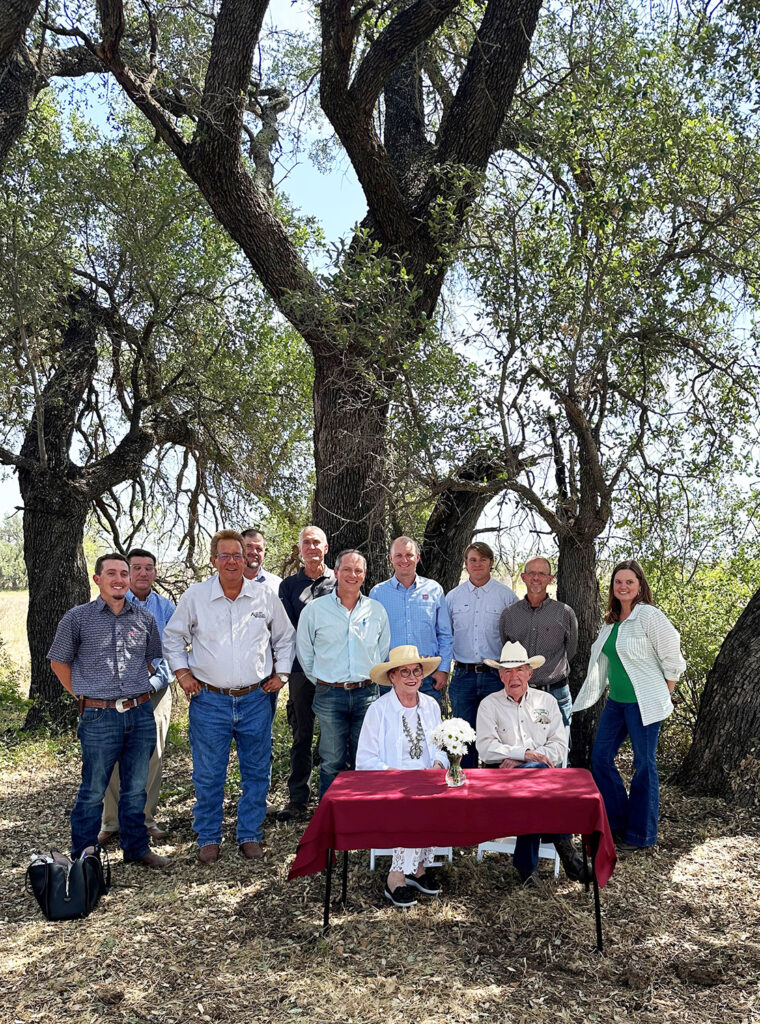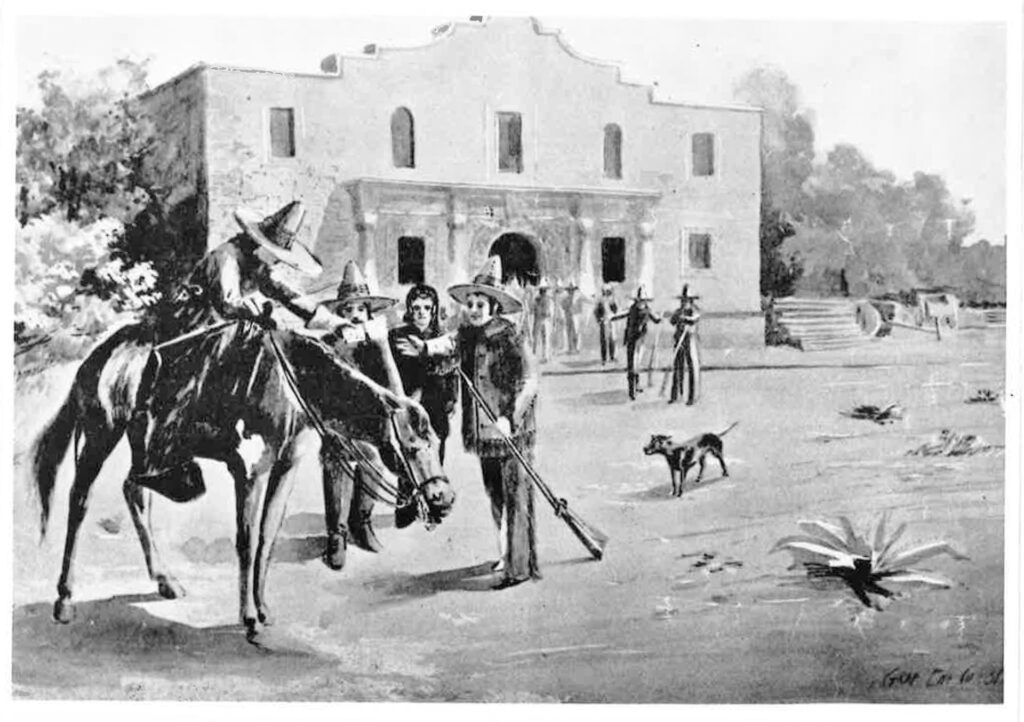Historic Slaughter-Harris Ranch to serve AgriLife Research carbon and greenhouse gas mitigation initiatives
Agency receives property donation from George Webb Slaughter descendants

Over 900 acres of the George Webb Slaughter Ranch in Palo Pinto County will serve a new Texas A&M AgriLife Research initiative to ensure the economic and environmental prosperity of Texas agriculture and natural resources production.
Slaughter founded the historic ranch in 1857. Following generations of family ownership, AgriLife Research received the land donation in a formal signing ceremony with Dr. Maynard F. Ewton Jr. and his wife, Rosemarie. The property carries deep foundational ties to the former Republic of Texas and the state’s history.
During the Texas Revolution, Slaughter served as Sam Houston‘s courier. A state historical marker recounts a ride by Slaughter to deliver correspondence to Col. William B. Travis at the Alamo in San Antonio. Slaughter’s marriage to Sarah Mason in 1836 was the first marriage sanctioned by the former republic. In 1857, Slaughter moved his family to Palo Pinto and operated a large cattle operation. From 1868 to 1875, thousands of his cattle were driven up the Chisholm Trail to the Kansas rail. Slaughter also practiced medicine and was a Baptist preacher.
The Future of the Slaughter-Harris Ranch
Native rangelands, plants and wildlife continue to inhabit the Slaughter-Harris Ranch. AgriLife Research scientists will seek to conserve these natural resources with new food, feed and fiber production methods that work harmoniously to support and strengthen the natural environment.
“We are honored to serve as the stewards of this precious piece of state history,” said G. Cliff Lamb, Ph.D., director of AgriLife Research. “In addition to benefiting directly from these important studies, the land will serve all Texans with our agency mission to nourish health, protect natural resources and support economies.”
“We’re pleased to see the ranch going to support the important agricultural commodity sectors, natural resources and wildlife of Texas, which have been a cornerstone of this land since its establishment in 1857,” said Ewton Jr. “This donation supports a new era of sustainable production that we are proud to encourage.”
The new ranch will house agricultural, natural resources and life sciences research conducted by scientists across the state and over a range of interconnected disciplines. Faculty of the Texas A&M AgriLife Research and Extension Center at Stephenville will manage the historic property.

“We have worked diligently over the past year with the Ewtons to develop a strategic plan for this beautiful and historic ranch, which was developed with their deep knowledge, desires and creativity,” said Bill McCutchen, Ph.D., director of the center at Stephenville. “The research-oriented plan provides us with a vision and pathway to follow, knowing that new challenges, opportunities and discoveries will resonate from this foundation.
“The plan includes important state, federal and private support to carry out our mission of research, extension and teaching across Texas A&M AgriLife – growing the skilled-labor force of the future to carry on the legacy of the Slaughter-Harris Ranch for decades to come.”
Small ruminant research
To help meet U.S. sheep and goat meat demands, research will include quantitative and molecular genetics to develop small ruminants that fit their environments, using the donated lands as a production model.
Researchers will work to optimize sheep and goat reproduction, combat brush encroachment through grazing and reduce the need for drug dewormers in controlling internal parasites over time. In the immediate future, researchers will work toward U.S. Food and Drug Administration approval of alternatives to anthelmintics – a common dewormer to which internal parasites have developed resistance.
Small ruminant research will build upon the success of the existing Livestock Guardian Dog initiative, which trains human-friendly dogs to live with sheep and goats and protect them from predators. The program has demonstrated a four-fold improvement in lamb and kid numbers.
Peanut cropping, plant-microbe interactions and a year-round grazing system
Meanwhile, AgriLife Research’s nationally recognized peanut breeding program seeks to establish a research nursery to increase the germplasm available for breeding new varieties. The program also aims to conduct dryland cropping system research and establish breeding trials along the ranch’s river tracts — steps toward building Texas’ standing as a peanut production powerhouse.
Peanut research at the ranch will coincide with studies on plant and microbe interactions and how they affect a plant’s ability to persist between precipitation events during drought. This research also holds implications for controlling invasive bluestem by restoring native plants and grasslands.
In concert with rangeland restoration efforts, developing a year-round grazing system will incorporate cool- and warm-season pastures to replace costly hay feeding in winter and drought conditions. Researchers’ goal is a new system that meets 100% of the protein and energy needs of wildlife, beef cattle, goats and sheep.
The far-reaching benefits of native plant restoration
Existing native plant performance at the ranch will be measured alongside their performance within croplands and pastures.
Molecular genomics research will play an important role in rapidly identifying the best native plant varieties for restoration needs. Plants will be selected based on low carbon intensity and their needs for inputs like water, fertilizer and pesticides. AgriLife Research scientists will also explore restoring natural fungal-plant interactions and developing new propagation techniques to enhance native plant performance.
Restoration efforts will carry significant implications for the reclamation of native soils, watersheds, plants and wildlife disturbed by development in energy, transportation, and water and utilities.
Methods pioneered at the ranch will be developed for viability in climate-smart small acreage management — a growing need with the proliferation of new small-acreage owners.
Next steps
AgriLife Research scientists and leadership will now work to formalize plans for establishing research and outreach facilities and test plots on the property.
Many of the studies planned for the land are already taking place at Texas A&M AgriLife centers across the state. They will converge at the ranch to produce far-reaching benefits for Texas and beyond.
Researchers expect to kick off projects at the new property by the spring of 2024.


